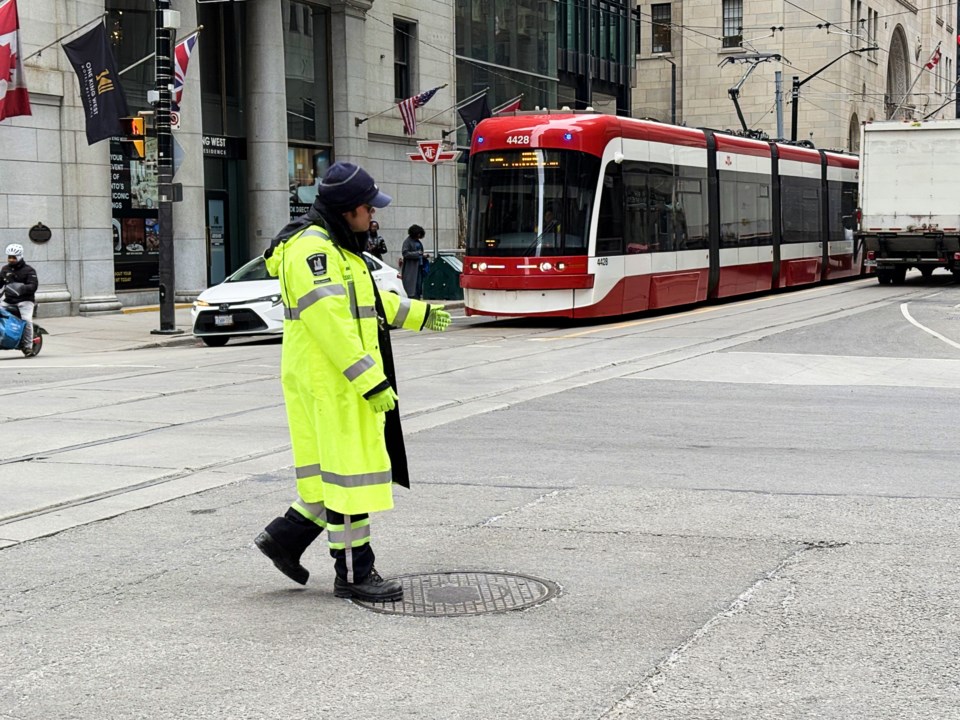Mayor Olivia Chow wants to hire a “traffic czar” to tackle all of Toronto’s congestion issues.
The city already has departments working to reduce gridlock but there isn’t enough coordination between them, Chow said. That makes it difficult to hold anyone accountable for the city’s traffic woes.
That’s where the czar comes in.
“That person will take the responsibility and all bucks will stop with that person,” Chow said on Wednesday afternoon.
Chow said she hopes to have the new czar in place by the summer. She batted away criticism that, as mayor, she should be the one held responsible for the city’s road congestion.
“There are other priorities,” she said. “I cannot be the mayor, the city manager, the department head, the commissioner and the police chief all in one.”
“That’s what civil servants are supposed to do. That’s why they’re being paid big bucks to deliver service,” she said.
Chow doesn’t intend to hire someone new to fill the position. Instead, a city bureaucrat who already works on congestion issues will likely be selected, which could come as a disappointment to Torontonians who think they already have the answer.
“Everybody has a solution to congestion. Everyone’s an expert,” said Coun. Mike Colle (Eglinton-Lawrence).
Coun. Stephen Holyday (Etobicoke Centre) said he’s concerned the new czar won’t have enough power and will have their hands tied by decisions made at city council.
“If we were really to think about who is responsible for congestion in this city, I would suggest council take a look at itself in the mirror,” he said.
Holyday criticized councillors for voting in favour of bike lanes and CaféTO patios, which he said contribute to congestion. However, a recent city staff report cited construction as the main reason cars move at a snail's pace.
Similarly, engineering reports prepared for the provincial government’s bike lane removal bill found bike lanes have a negligible impact on congestion.
Ticketing blitz incoming
Chow’s push for a traffic czar came alongside a proposal for an enforcement blitz against cars parked in no-stopping zones on major roads during rush hour. The first phase will come in June, with a second to follow in September.
The two motions follow several other steps the city has taken to reduce commute times.
The city recently implemented a new pricing system that penalizes construction projects for every day they close down a lane of traffic. Previously, companies only paid a meagre one-time fee.
In 2022, a contractor closed nearly five kilometres of Lake Shore Boulevard for a month, bringing the thoroughfare down from three lanes to one.
It only cost $4,400. Under the new system, the contractor would pay nearly $300,000.
On April 10, Roger Browne, the city’s head of traffic management, said he’s seen promising trends in negotiations with project proponents ahead of construction season.
Colle said a developer in his ward planned to close a lane along Eglinton Avenue but decided against it after learning about the new fees.
Major intersections will also see more traffic agents managing car flow at busy intersections this summer. Chow’s 2025 budget included $3 million to hire 75 new agents during rush hour.
The city currently employs 22 traffic agents, with 45 new recruits in training expected to hit the streets by summer. The remaining agents will be deployed by year’s end.
As the program expands, the number of intersections staffed by traffic agents will grow from three to 16.
The agents have had a significant impact on easing congestion. At the busy King Street and Spadina Avenue intersection, for instance, streetcar travel times dropped dramatically — from 44 to 65 minutes down to just 17 to 21 minutes — when agents were present, according to city data.
Similarly, at Bay Street and Front Street, agents helped reduce box-blocking incidents — when a driver attempts to push through a light and gets caught in the middle of the intersection — by 64 per cent and cut vehicle travel times by one-third.




